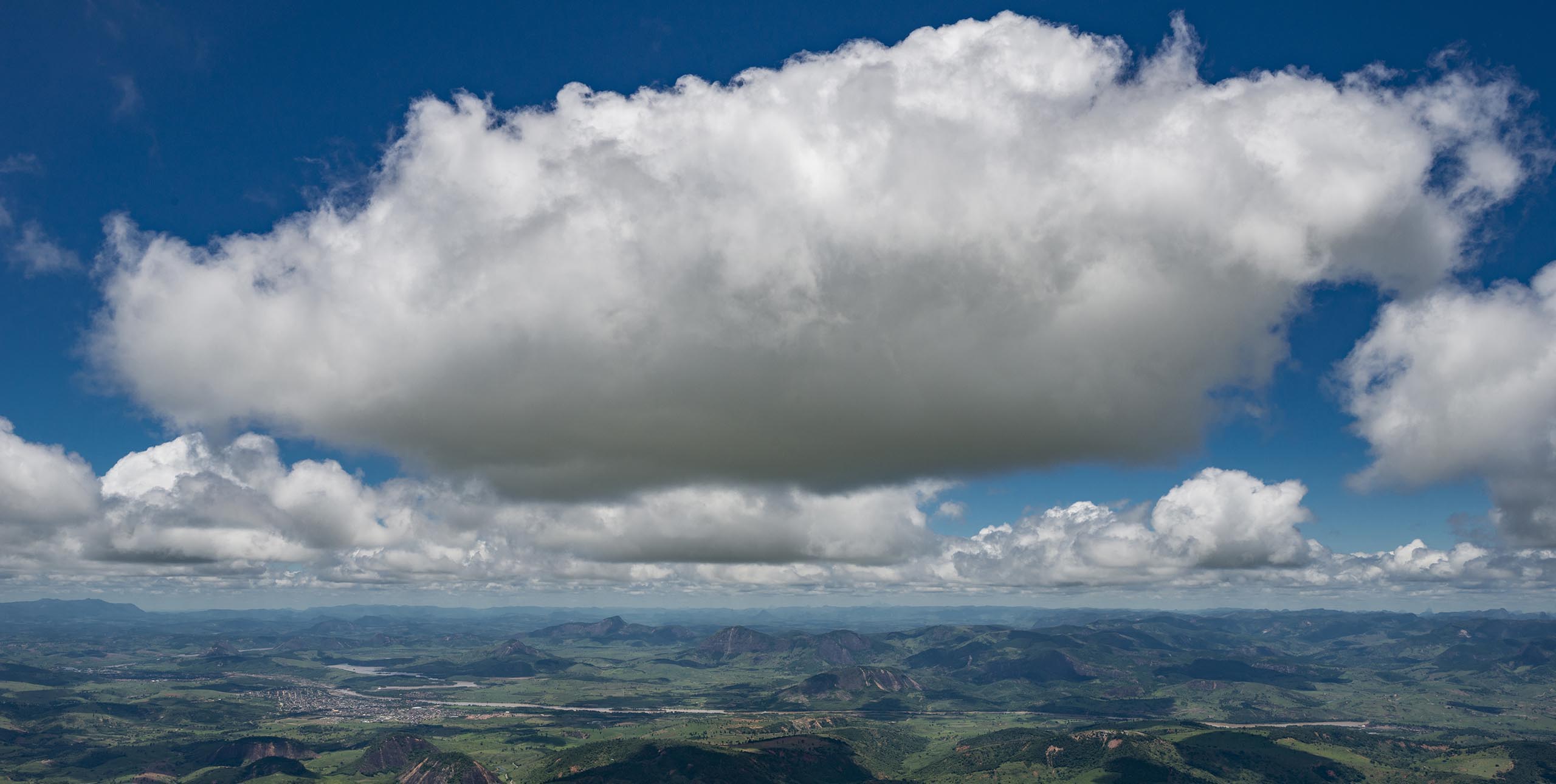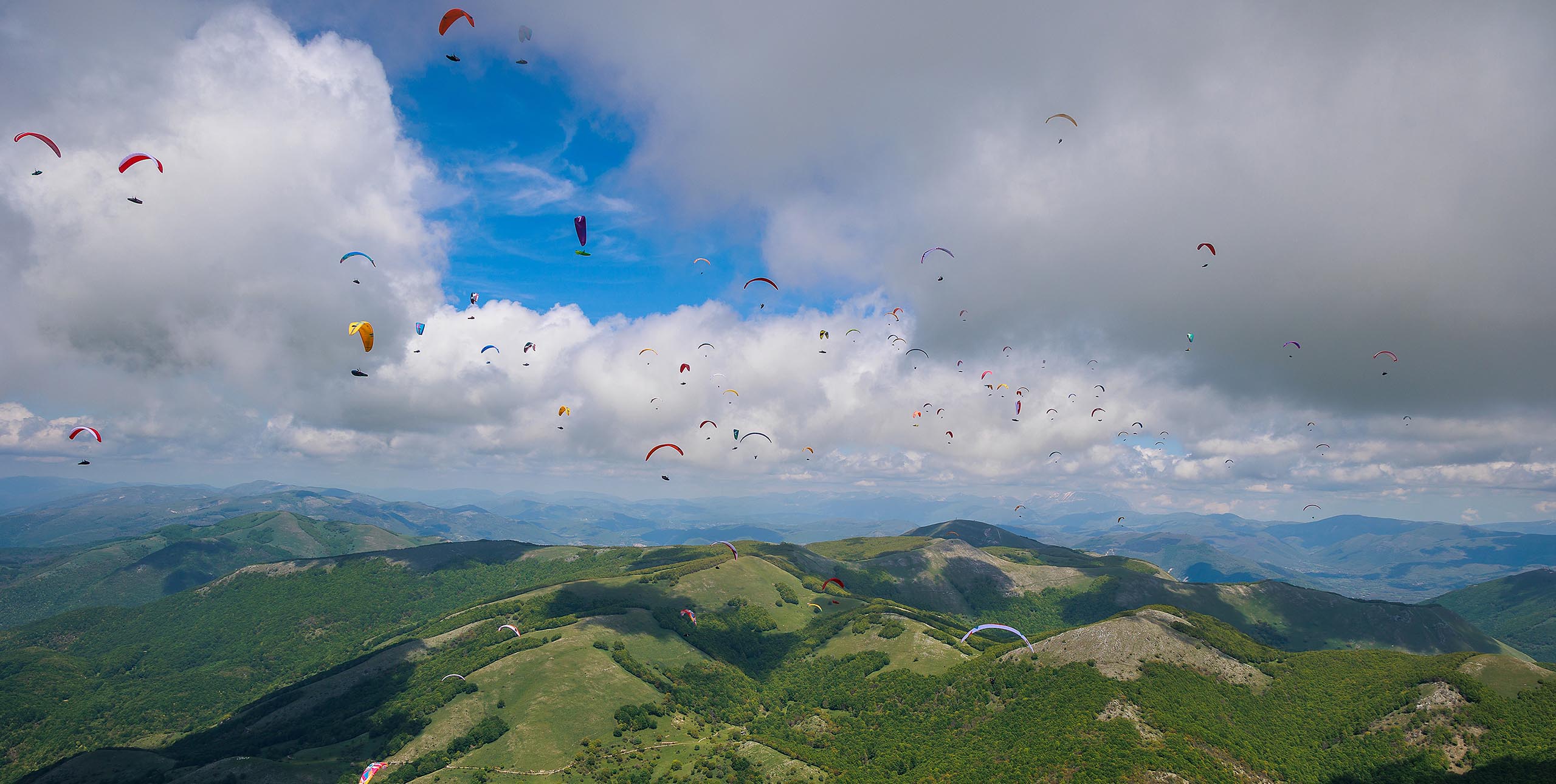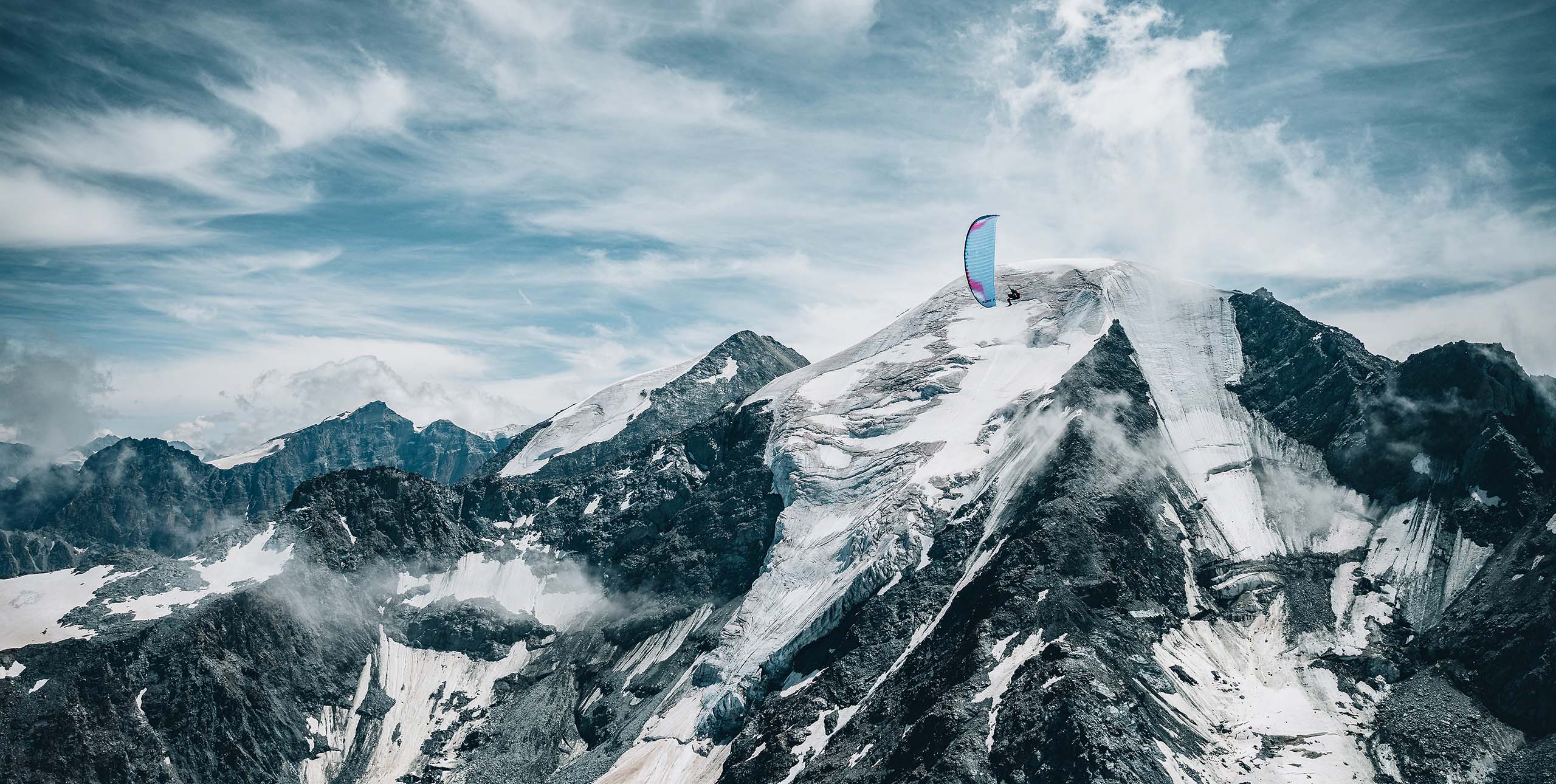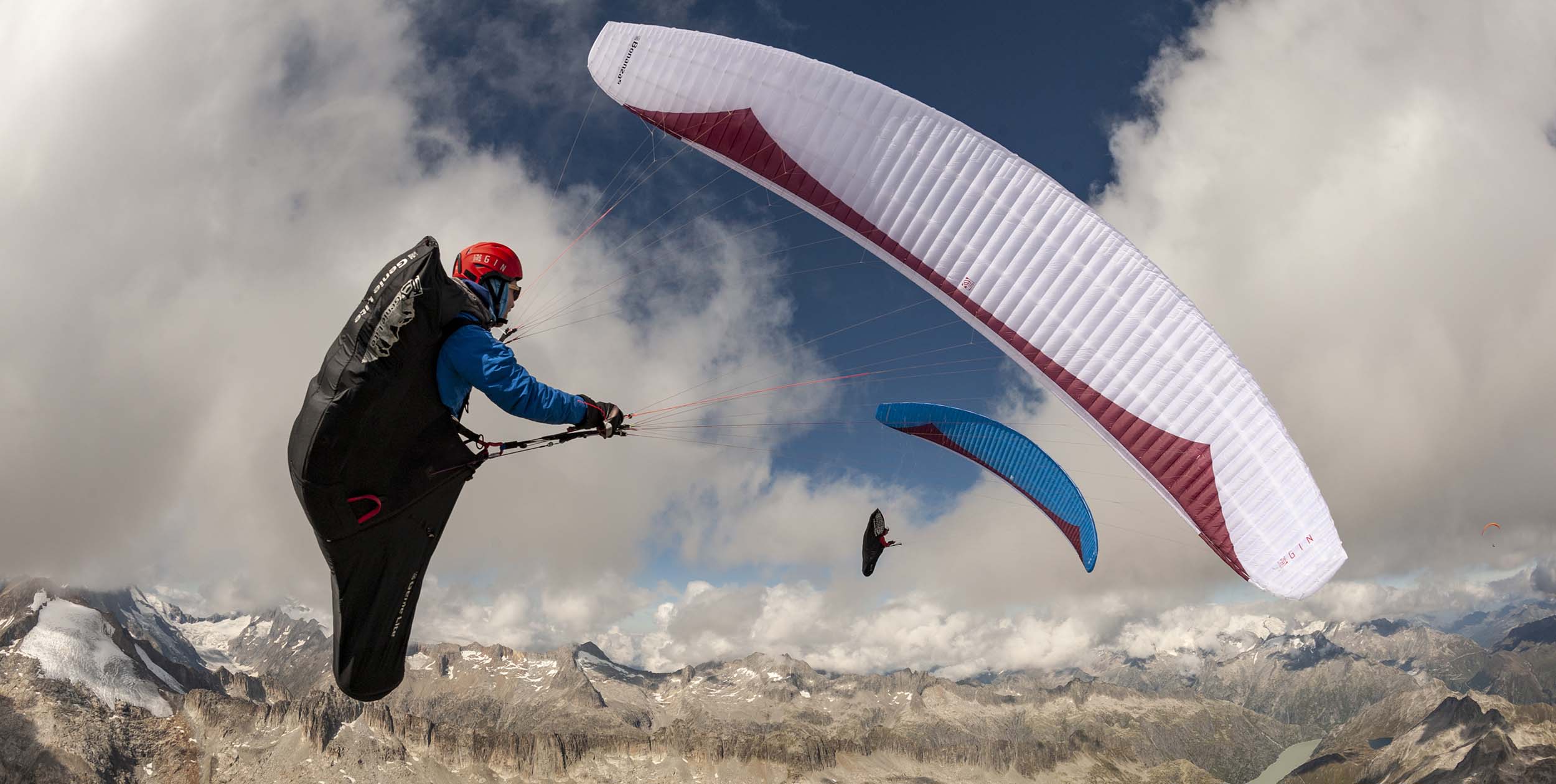
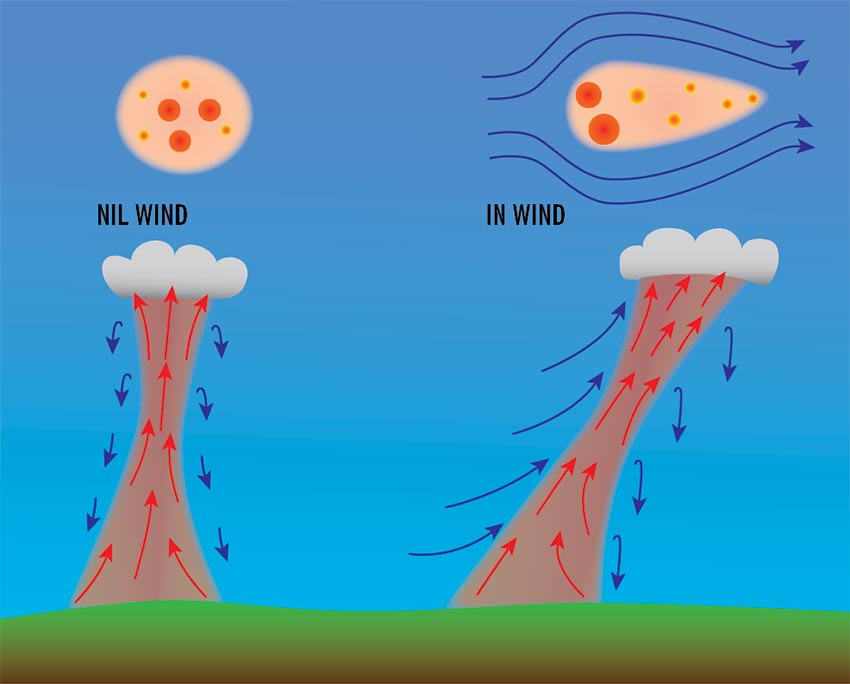
In nil wind, in can be useful to think of thermals forming like mushroom clouds, with a main core dotted with hotspots of extra strength. But in the wind it all changes and things can difficult. Here are five things you need to know about flying thermals in the wind.
1. Wind distorts the column of lift, tilting it over at an angle. Because a thermal actually has its own mass the wind blows around it and up it rather like a mountain face. That airflow on the front of a thermal produces dynamic lift like a mountain face too. If you have ever soared up the outside of a cumulus cloud you will have experienced this.
2. The airflow around the sides and behind a thermal can also get disturbed. Think of it in the same way as wind flowing around a more solid and tangible object, like a tall building. This causes turbulence and can be a cause of those unexpected whacks you sometimes get on thermic days.
3. Inside the thermal are hotspots, or micro cores. This is the stuff we pilots love so much and hone-in on with our instruments and intuition. They are formed by hotspots on the ground that heated the air that formed the thermal you’re now climbing in. Cores travel upwards faster than the rest of the thermal. They have a greater vertical velocity than the weaker lift so they are less affected by the horizontal wind.
4. The cumulative effect is that the weaker lift gets blown to the downwind side of the thermal – while the stronger cores remain at the upwind side. This is why we should always be working our way to the upwind side of the thermal to find the strongest lift. Do this by extending your 360s slightly when facing into the wind. When you reach the edge of the thermal you sometimes get an extra surge in lift as you hit the dynamic lift on the outside of the thermal. Push too far and fall out of the upwind side of the thermal and you only have a quick downwind dash straight back into the strongest lift again.
5. In comparison, the downwind side of the thermal is a bleak place to be. The lift is weaker, and should you slip out of it you fall into the leeside sink of the thermal and have an upwind struggle to get back to the thermal. When you do get back in it, you arrive back in the weakest lift. If you’ve ever been thermalling with another pilot and seen them fall out of the climb and plummet like a stone, you know they’ve found the downwind edge of the thermal for you.


